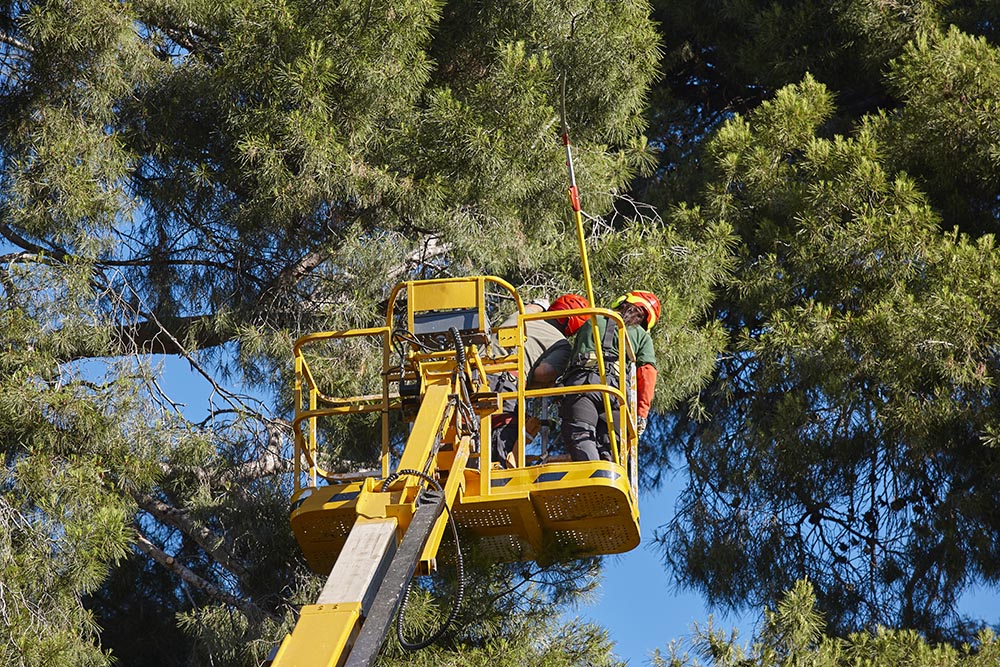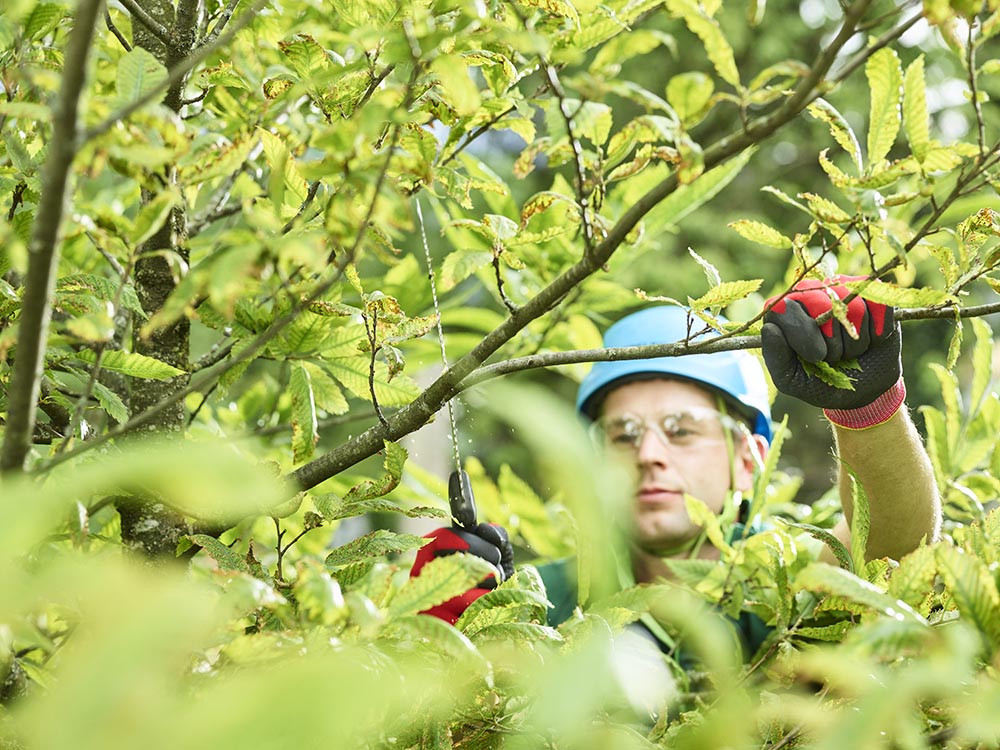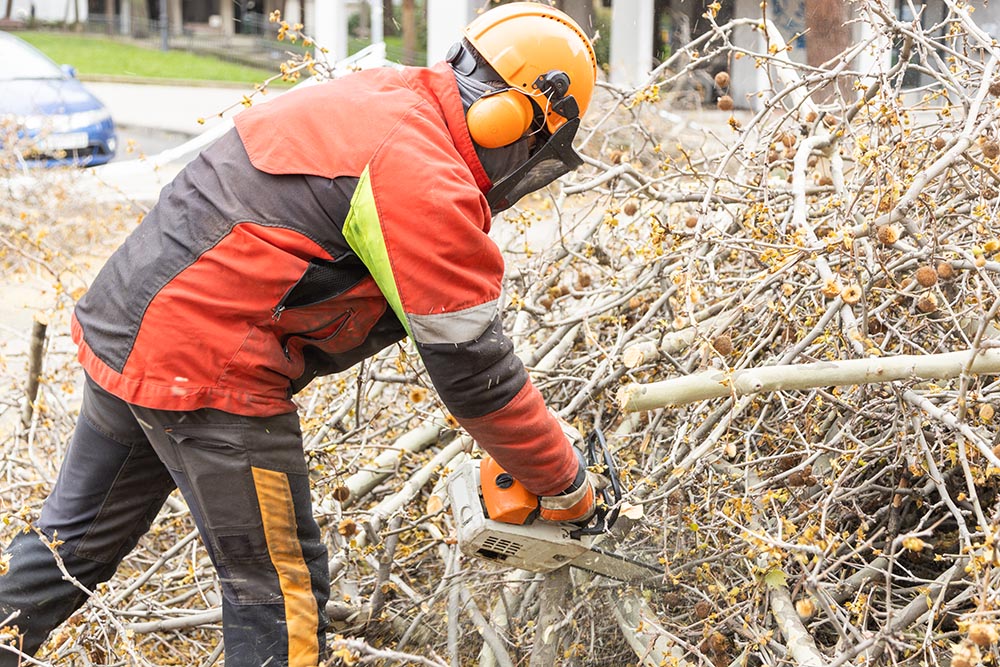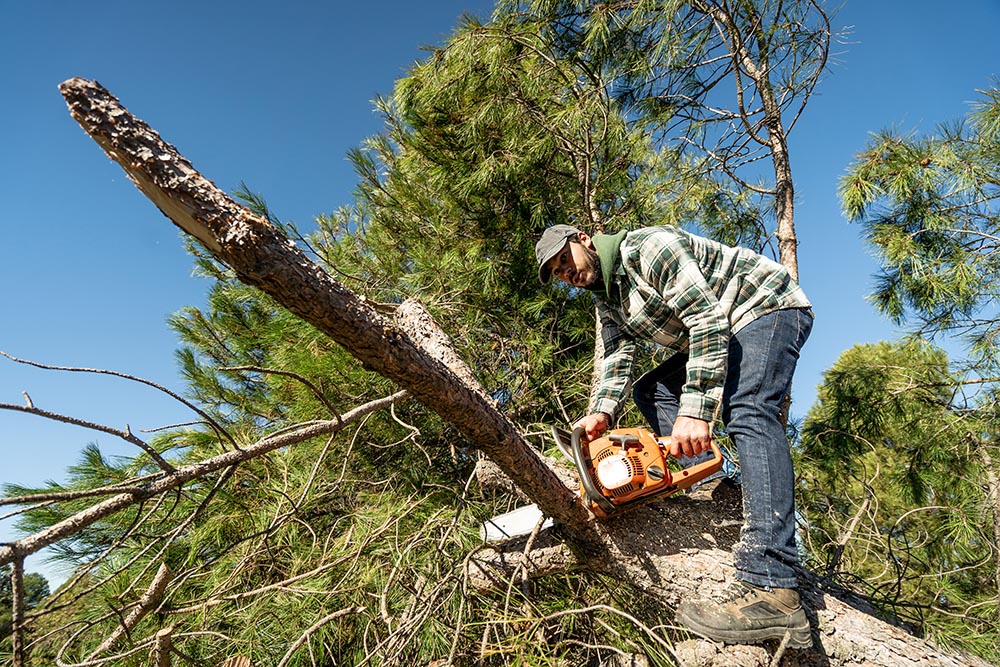Tree maintenance plays a crucial role in the health, aesthetic appearance, and safety of trees on your property. Various techniques are employed to achieve specific objectives, such as changing the shape of a tree’s crown, reducing it in size, or encouraging new growth.
In this article, we’re going to explore the differences between tree pruning, lopping, coppicing, and pollarding – including their intender purposes. We’ll also discuss which of the four methods is safest – and indeed whether over-pruning can harm trees.
Can’t decide which method is best suited to your needs? Read on and we’ll tell you everything you need to know on the subject…

What is Tree Pruning?
First things first: what is meant by ‘tree pruning’? Here are some distinct features to note:
- Tree pruning is the practice of selectively removing specific branches or parts of a tree to enhance its health, appearance, and structure.
- It involves carefully cutting away dead, damaged, or diseased branches, as well as removing any unwanted growth.
- Tree pruning is commonly done to maintain tree shape, improve airflow, stimulate new growth, and prevent potential hazards.
What is Tree Lopping?
And what is meant by ‘tree lopping’? Isn’t it the same thing as tree pruning? Here’s everything you should know:
- Tree lopping, also known as topping, involves cutting back large sections of a tree’s canopy or main branches, often leaving stubs.
- This method is usually used to reduce tree size quickly or control the spread of branches.
- Lopping is considered an outdated practice and can be harmful to trees, as it compromises their structure and health.
It’s important to understand the distinction between tree pruning and tree lopping as both terms are often used interchangeably which can lead to disastrous consequences.

What is Tree Coppicing?
Next, what is meant by ‘tree coppicing?’ Let’s take a closer look:
- Coppicing is an ancient technique used primarily on certain tree species, such as willows and hazels.
- It involves cutting the tree back to its base or ground level, allowing multiple shoots to regrow from the stump.
- Coppicing is typically done to promote vigorous growth, produce straight stems for various uses, or for sustainable fuelwood production.
What is Tree Pollarding?
Finally, what is meant by ‘tree pollarding?’ Here are some noteworthy points to help you distinguish this method from the rest:
- Pollarding is a similar technique to coppicing but involves cutting back the upper branches of a tree, often above head height.
- It aims to create a dense head of branches and restrict the tree’s growth to a specific size or shape.
- Pollarding is commonly used for ornamental purposes, street trees, or to produce timber from certain species.

What is the Difference Between Tree Pruning, Lopping, Coppicing, and Pollarding?
Now that we have a better understanding of all four tree care and maintenance techniques, let’s put them against one another; what are the main differences?
- Pruning: involves selective removal of specific branches or parts of a tree to improve its health, appearance, and structure.
- Lopping: refers to the drastic cutting back of large sections of a tree’s canopy or main branches and is generally discouraged due to its negative impact on tree health.
- Coppicing: entails cutting a tree back to the base to stimulate new growth from the stump, primarily for sustainable uses such as fuelwood or straight stem production.
- Pollarding: involves cutting back the upper branches of a tree to control its growth and create a dense head of branches, often for ornamental or timber production purposes.
As you can see, the four techniques are each incredibly different, with very distinct purposes. As such, it’s important that you fully understand what is involved before committing to a specific technique.
To be on the safe side, we strongly recommend that you speak with a professional arborist and seek their advice before making any commitments and taking the saw to the trees on your property.

Which is the Safest Tree-Maintenance Method?
Now onto the important question: which is the safest tree care and maintenance method out of the four?
- Tree pruning, when done correctly and with proper knowledge, is generally considered the safest tree maintenance method.
- It allows for the selective removal of specific branches, promoting tree health and maintaining its structural integrity.
- Pruning should be performed by trained professionals to ensure proper techniques, tools, and safety measures are followed.
While all four methods have their place, proper tree pruning is the safest tree-care and maintenance technique as it doesn’t cut away too much of the tree in one sitting like lopping – which would otherwise cause unnecessary trauma (and can sometimes lead to the death of a tree).
Can You Over-Prune a Tree?
While tree pruning is the safest method of tree maintenance, can you overdo it?
- Yes, over-pruning can harm trees and lead to various issues.
- Removing too many branches at once can weaken the tree, disrupt its growth pattern, and make it more susceptible to diseases and pests.
- Over-pruning can cause stress and shock to the tree, resulting in stunted growth, reduced vigour, and even its eventual decline.
Conclusion
Understanding the differences between tree pruning, lopping, coppicing, and pollarding is essential for proper tree maintenance – and ensuring that your trees get exactly the right care that they need.
- Pruning, the selective removal of specific branches, is the preferred method for improving tree health, appearance, and structure.
- Lopping, a more drastic approach, should be avoided due to its negative impact on tree health.
- Coppicing and pollarding are specialised techniques used primarily for sustainable uses, such as fuelwood production or specific tree shapes.
When it comes to tree maintenance, it is important to hire trained professionals and avoid over-pruning, as excessive removal of branches can harm the tree’s health and longevity.
By adopting appropriate tree-maintenance practices – at the right time – you can ensure the well-being and beauty of your trees for many, many years to come.
We hope you found this article handy and wish you the best of luck with caring for the trees on your property and keeping the exterior of your home looking gorgeous. Thanks for reading!







